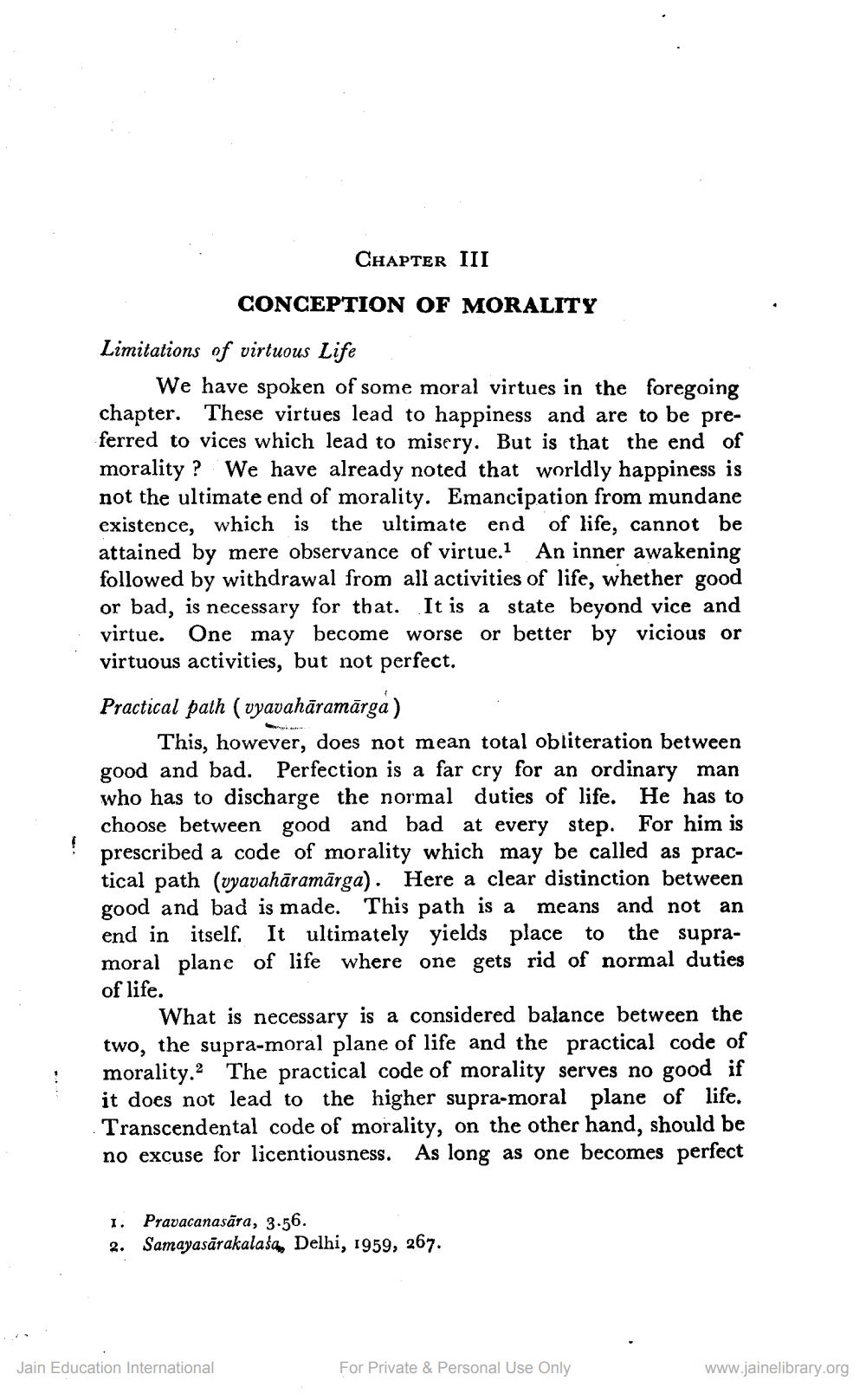________________
CHAPTER III
CONCEPTION OF MORALITY
Limitations of virtuous Life
We have spoken of some moral virtues in the foregoing chapter. These virtues lead to happiness and are to be preferred to vices which lead to misery. But is that the end of morality? We have already noted that worldly happiness is not the ultimate end of morality. Emancipation from mundane existence, which is the ultimate end of life, cannot be attained by mere observance of virtue.1 An inner awakening followed by withdrawal from all activities of life, whether good or bad, is necessary for that. It is a state beyond vice and virtue. One may become worse or better by vicious or virtuous activities, but not perfect.
Practical path (vyavahāramārga)
This, however, does not mean total obliteration between good and bad. Perfection is a far cry for an ordinary man who has to discharge the normal duties of life. He has to choose between good and bad at every step. For him is prescribed a code of morality which may be called as practical path (vyavahāramarga). Here a clear distinction between good and bad is made. This path is a means and not an end in itself. It ultimately yields place to the supramoral plane of life where one gets rid of normal duties of life.
What is necessary is a considered balance between the two, the supra-moral plane of life and the practical code of morality. The practical code of morality serves no good if it does not lead to the higher supra-moral plane of life. Transcendental code of morality, on the other hand, should be no excuse for licentiousness. As long as one becomes perfect
Jain Education International
I. Pravacanasara, 3.56.
2. Samayasarakalasa, Delhi, 1959, 267.
For Private & Personal Use Only
www.jainelibrary.org




